Create recipient groups
Since this extension is made to send personalized mails to groups of recipients, this groups has to be defined first.
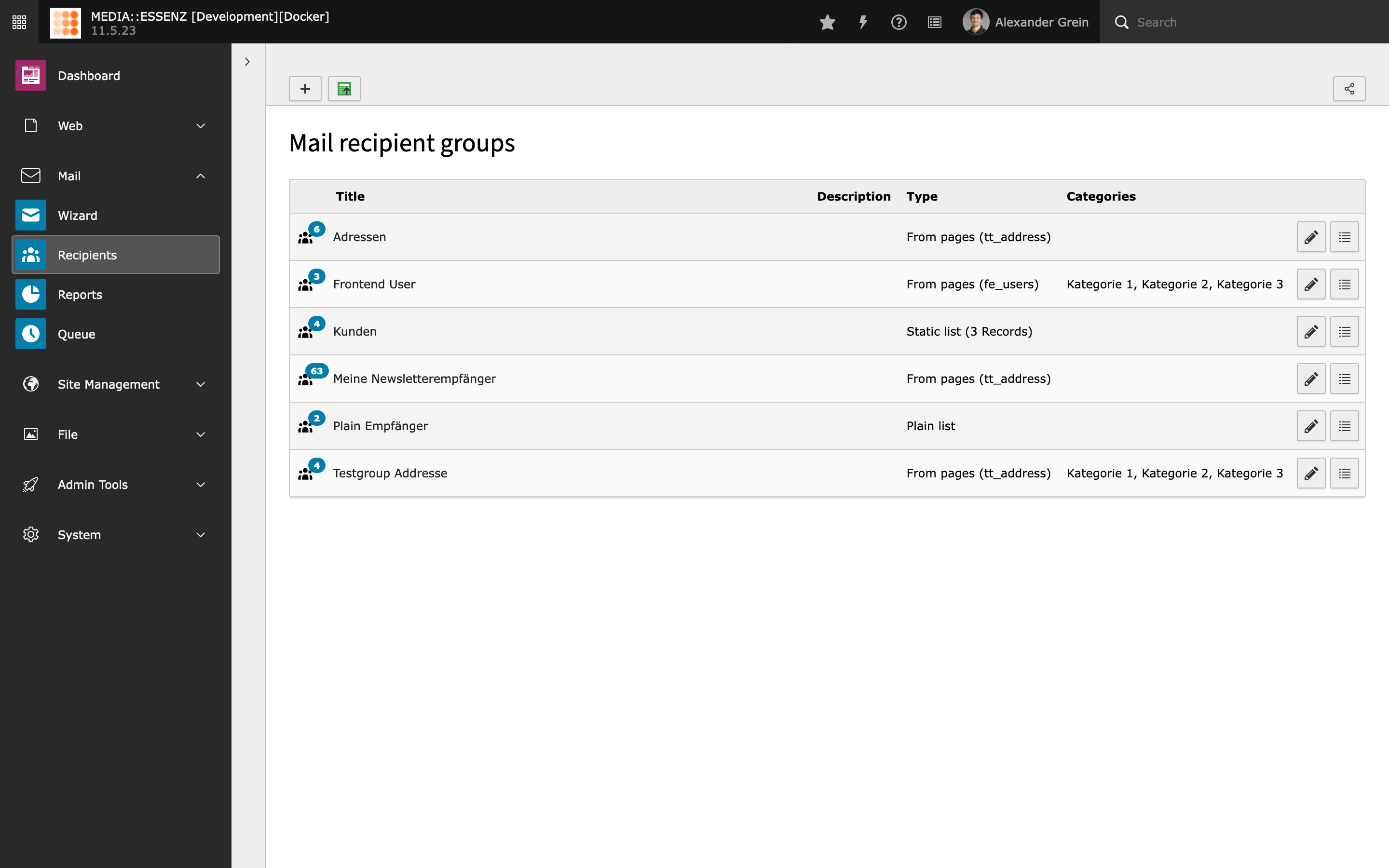
MAIL comes with a lot of possibilities:
-
From pages
- Compare to EXT:direct_mail, MAIL is not limited to fe_groups, fe_users, tt_address and one custom table
- It is possible to add as many tables you like, as long they have the needed fields or an extbase model which implements at least the RecipientInterface, defined in Classes/Domain/Model/RecipientInterface.php
- To make it even more flexible it is possible to define query restrictions (for tables) or use the RecipientsRestrictionEvent (for extbase) to filter recipients list. Checkout https://gitlab.com/mediaessenz/additional-mail-recipients how to do it.
- Beside the recipient source (table) it is also possible to set a starting point where the records should be taken from
- Categories can also be set to filter the list of recipients to only those who have at least one of them assigned as well
-
Plain list
- A comma separated list of recipients (just mails or names and mails separated by a comma or semicolon)
- Compare to EXT:direct_mail, within MAIL you also can choose whether the recipients should get html or plain mails.
- Categories are also assignable
-
CSV (Plain/File)
- Configurable CSV input format (different separators, enclosures and check if first line contain field names)
- If the first line doesn't contain the fieldnames, the order of the data must be "name", "email" and (optionally) "salutation"
- Data can be plain pasted into the data field or from a selected csv file (must be utf-8 encoded!)
- Compare to EXT:direct_mail, within MAIL you also can choose whether the recipients should get html or plain mails.
- Categories are also assignable
-
Static list
- Single records of all defined sources can be added – also fe_groups which will add all fe_users who have this groups assigned.
-
From other recipient lists
- To make things even more flexible, it is also possible to create a compilation of different other recipient groups.
Some EXT:direct_mail power users may miss the possibility to define queries as sending groups. This feature is currently not available, and will maybe come with a future release. Sponsoring is highly welcome.
Importing CSV data (plain/file) as tt_address records
This module, which needs tt_address to be installed, gives you the option to import a csv (comma-separates list) of addresses as tt_address records, which could be added as "From pages" or "Static list" recipient group afterwards.
To make it easier to import csv records, there is a wizard, which guide you through the process.
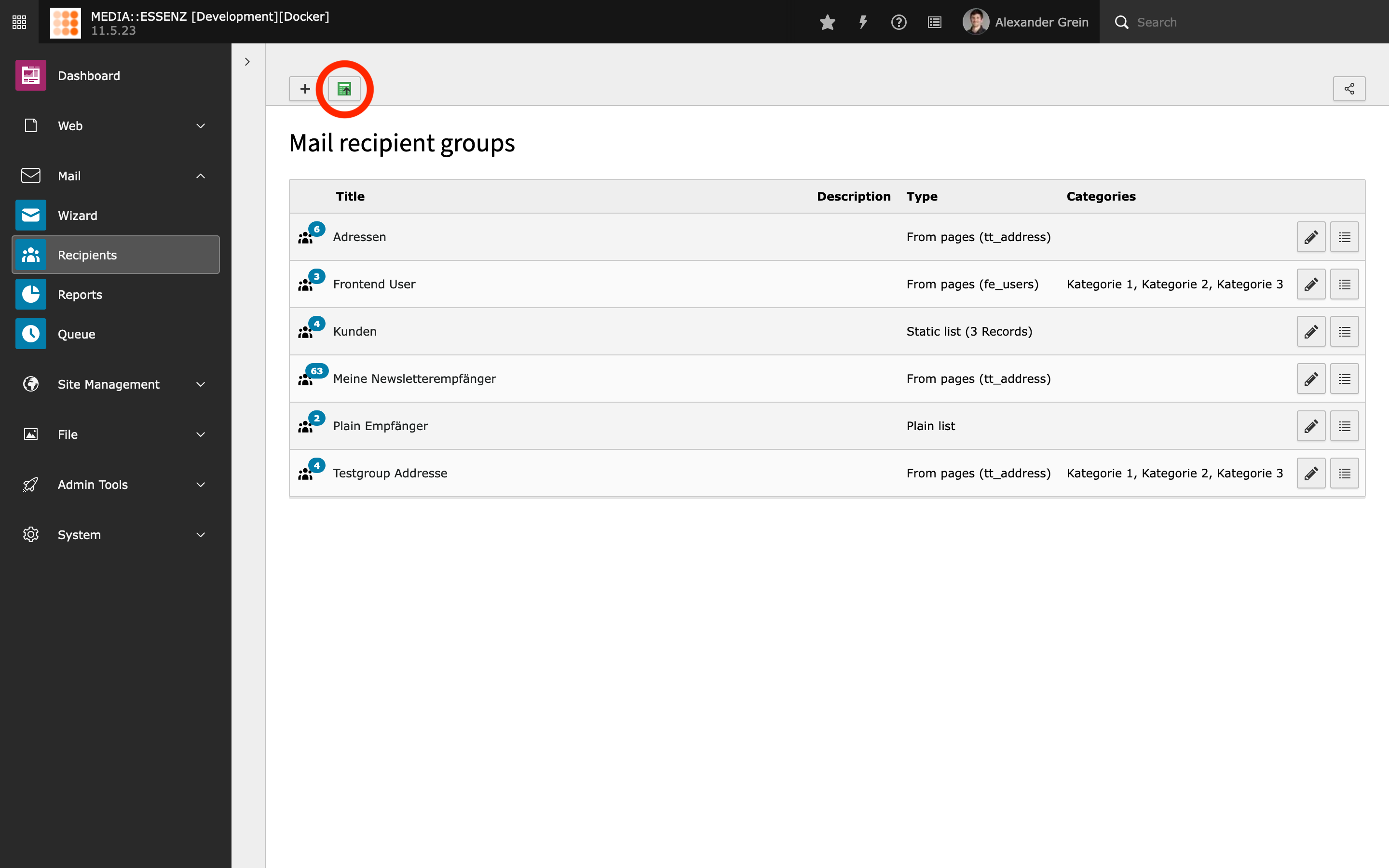
In the first step you can choose to upload a csv file or paste the records into a text field. You can use comma (;), semicolon (;), or colon (:) as field delimiter. This can be configured in the second step.

By clicking the NEXT button, the csv file or csv records are uploaded and the second step is shown. In this step you can specify the detail information of the csv data, such as field delimiter, field encapsulation, and field name in the first line. You can also specify the sys-folder, where the records should be imported to, the uniqueness of the records, rename or update the records if a similar record is found, or to empty the sys-folder before importing.
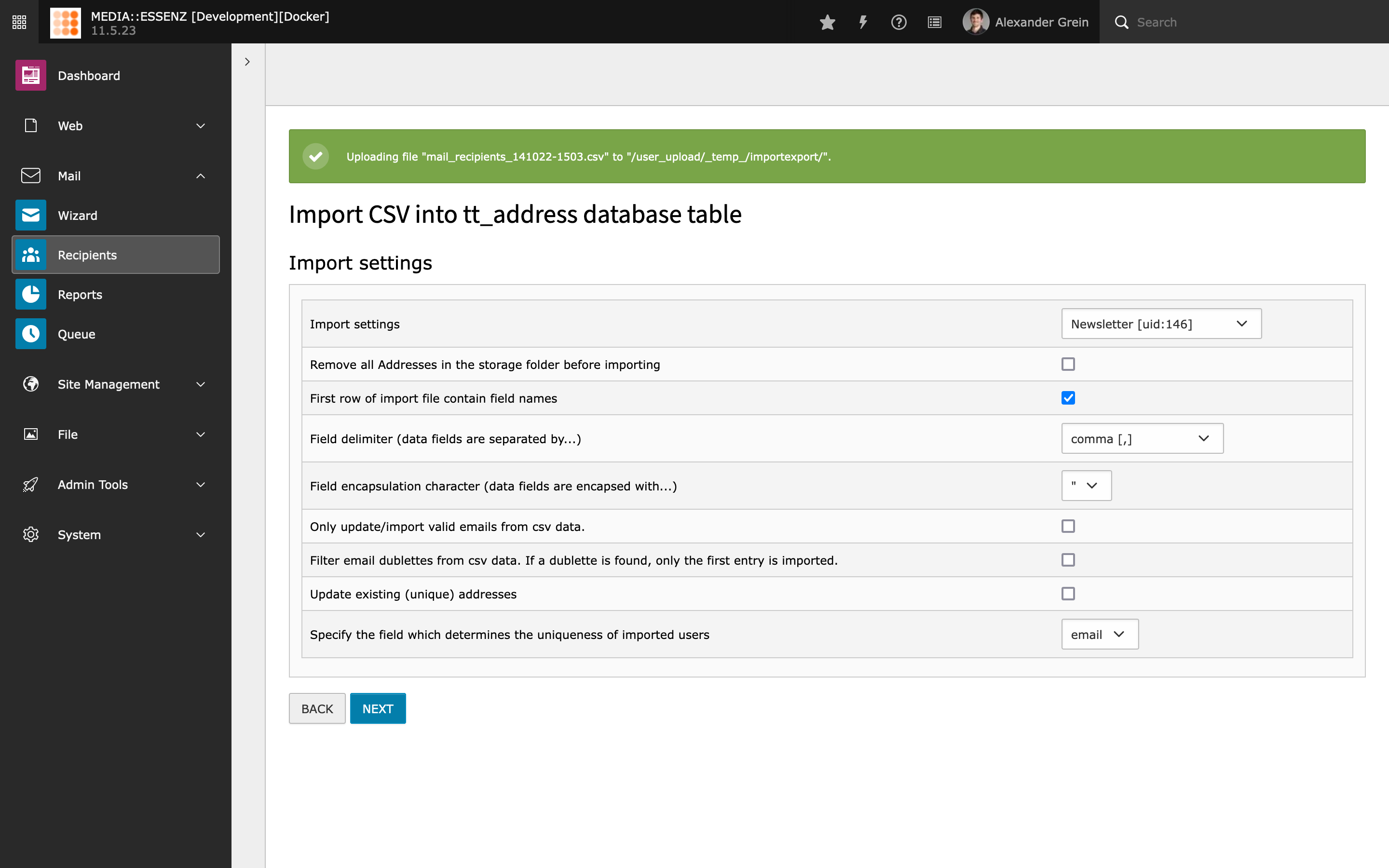
Warning
If you set the field “remove all Addresses in the storage folder before importing”, all records in this sys-folder WILL be physically deleted .
After specifying the configuration you can start mapping the fields. There are 3 columns in the mapping step. The description column shows the first row of the csv records (if you set in the configuration that the first row is the field names) or shows only field_xx (where xx is continuous number).
The mapping column shows only the list of field, which are part of tt_address table. You must at least map the field “Name” and “Email”.
The value column shows the first up to three rows from the csv records. They should help you to map the field.
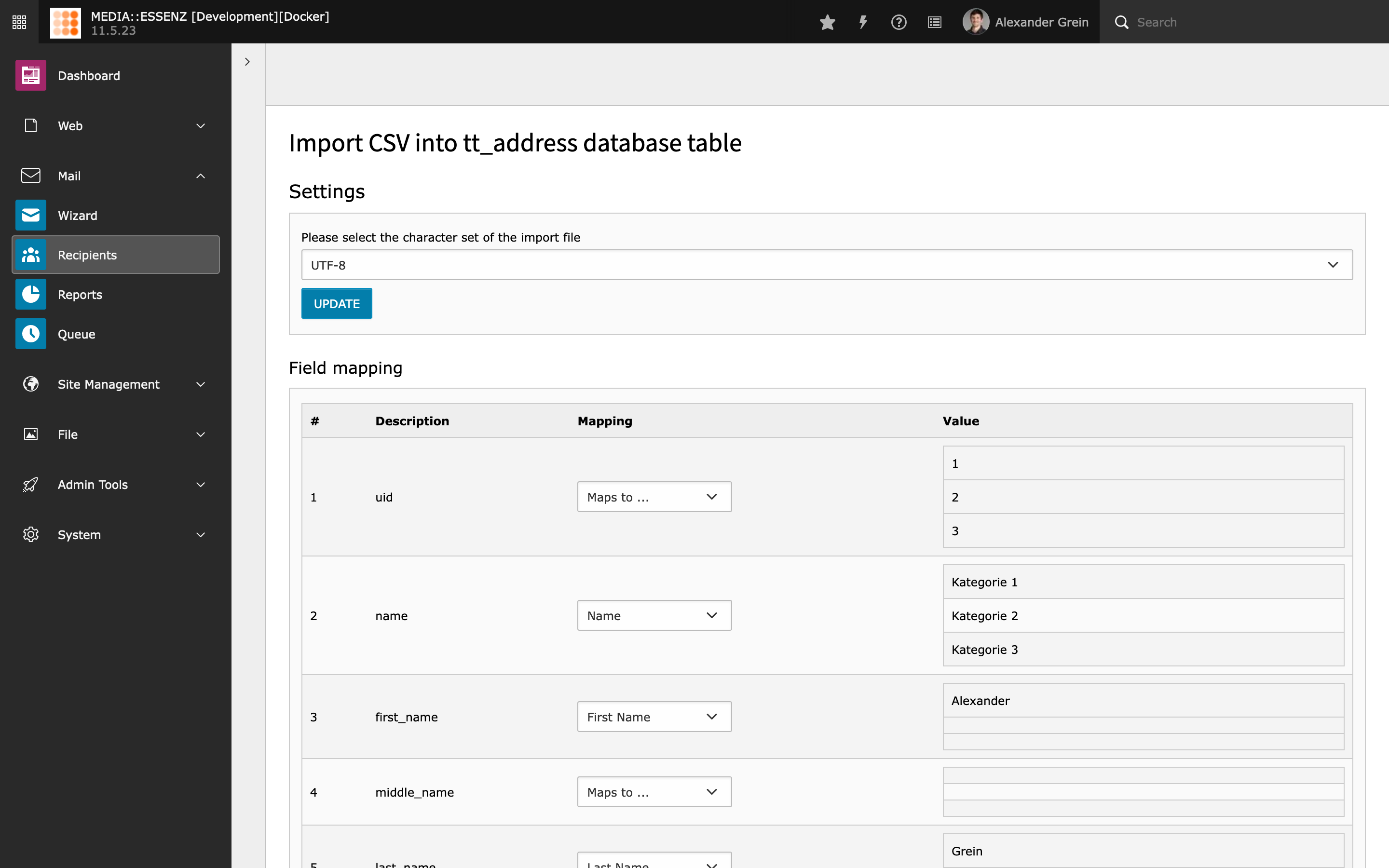
You can also set the HTML flag or categories to all records you are importing.

In the select box, which contains the field names of tt_address, there is also an entry “categories”. This entry can be mapped to a comma-separated list of sys_category IDs. This value will overwrite whatever categories you selected in the “Additional options” section.
After mapping the fields you are ready to start the import process by pressing the IMPORT button. If finished a list of new imported, invalid email, updated and doublet records will be shown.
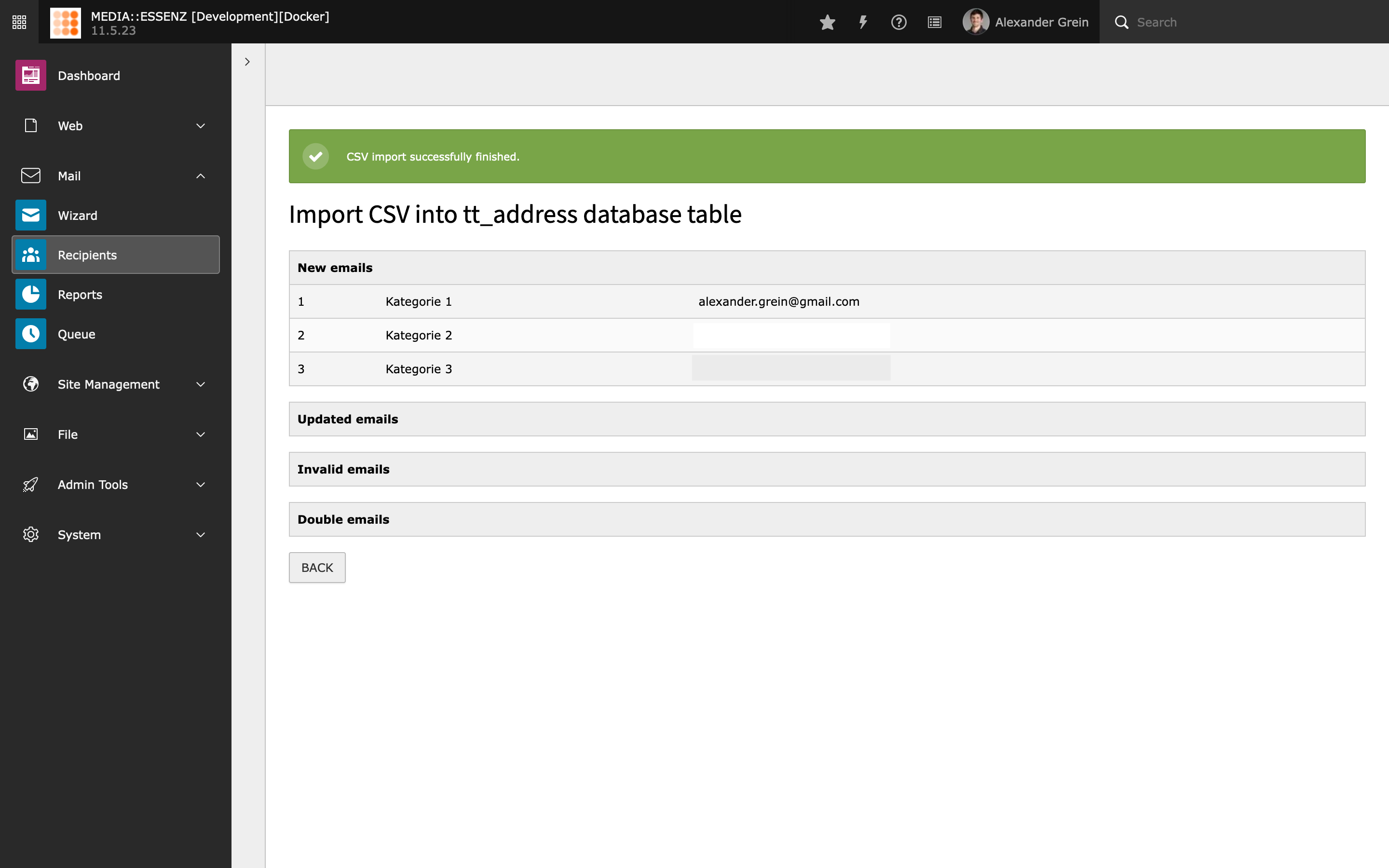
This process generates tt_address records in the choosen folder. To create a recipient group from this records, you must add a new recipient group of the type “From pages” and select “Addresses” as Recipient source. Then choose the folder where you imported the records under "Startingpoint" and finally press Save.
